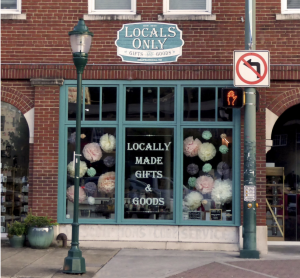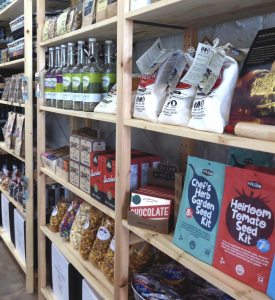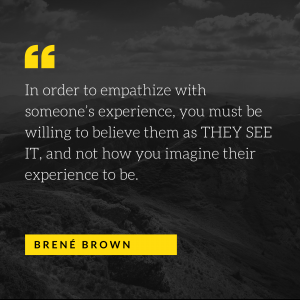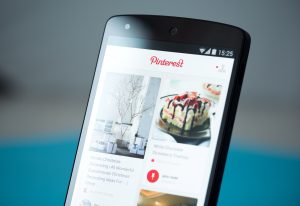Consumers have a lot more choices regarding what they buy and who they buy it from. Regardless of your product or service, eCommerce has leveled the playing field when it comes to your competition. That means gaining your audience’s attention takes more than just creative marketing, compelling content, and fancy branding. More than ever, consumers want your business not only to understand what they need and want but also why.
Harvard professor Gerald Zaltman claims that 95% of buying decisions are based on the subconscious mind.  This means that our buying decisions are not always logical and that emotions quite frequently drive them. So selling your goods or services based solely on how great your product is will only go so far. But engaging with your customers by how they feel will drive further sales and create more brand loyalty. For example, athletic and outdoor brands inspire a feeling of adventure, while luxury brands incite confidence and acceptance among certain social circles.
This means that our buying decisions are not always logical and that emotions quite frequently drive them. So selling your goods or services based solely on how great your product is will only go so far. But engaging with your customers by how they feel will drive further sales and create more brand loyalty. For example, athletic and outdoor brands inspire a feeling of adventure, while luxury brands incite confidence and acceptance among certain social circles.
What is empathetic marketing?
Empathy-based marketing is understanding your customers’ experiences and emotions, enabling you to better help them get the service they need from you and your business. It’s the whole “walk a mile in my shoes” idea. In marketing, it’s about understanding your customers’ motivations. Think about your own shopping experiences and what emotions drove you to make individual purchases. Be the customer.
Be sure not to get confused, however, with sympathy, which is a whole other idea. The two are often mistaken for each other. While sympathy means feeling pity or sorrow for someone else’s misfortune, empathy means being aware and sensitive to others’ feelings, thoughts, and experiences. Empathy is about seeing experiences from someone else’s perspective.
Why is empathy-based marketing important?
The benefits of empathetic marketing are numerous. When a customer  views a brand as empathetic, they can relate to not just the products it sells but the overall mission of the company. Here are three examples of why it’s so important:
views a brand as empathetic, they can relate to not just the products it sells but the overall mission of the company. Here are three examples of why it’s so important:
- Considered an essential aspect of how customers view a company’s service quality
- Inspires a more significant competitive advantage
- Fosters trust and increases sales
Ways you can implement empathetic marketing.
Understand who you’re marketing to – Chances are you have a pretty good idea of who is buying your products or services. But just in case, think about who your regular customers are. To effectively communicate with them, you need to understand what they care about and how your product can give them what they want. Personalization and segmentation can help with this.
Ask why – Tracking who is buying your products is only one part of the equation. Now you must find out why if you want to up your empathy game. This means talking with your customers,  whether it’s in-person or on social media. Asking them why they are buying your products, or even why they don’t, will help you understand their shopping motivations. Creating and distributing a survey is a great way to do this. Facebook has an excellent survey creation tool. Survey Monkey is another popular tool that can be used on social media or in email marketing. Then take what you’ve learned and apply it to your marketing.
whether it’s in-person or on social media. Asking them why they are buying your products, or even why they don’t, will help you understand their shopping motivations. Creating and distributing a survey is a great way to do this. Facebook has an excellent survey creation tool. Survey Monkey is another popular tool that can be used on social media or in email marketing. Then take what you’ve learned and apply it to your marketing.
Express concern – Seeing things from your customers’ perspective is only part of being empathetic. It’s also the ability to identify the emotion someone else is feeling and express your concern. Responding to a customer concern over social media, either by tagging them in the comments section or sending a direct message and using phrases like, “I’m sorry to hear that you are having trouble” and “I understand how that could be frustrating,” helps in situations like this. And then go a step further and say, “How can I help?” An email and even a phone call are also good ways to do this.

Employ empathy in your language – For example, using the right pronoun can go a long way in making customers feel like you understand them. It’s a way of uniting and aligning your business with their goals and values. Using the pronoun “we” rather than “I” or “you” is an excellent way of doing this. According to HubSpot, this helps the customer feel like you’re working together with them on a problem.
Read examples of some of the best empathetic marketing going on right now to inspire your efforts in reaching your audience on a deeper level.
Join NFICA for $5 a year
We offer our community of 15k+ independent contractors, small business owners, freelancers, and direct sellers industry-leading benefits. As a member of NFICA, you’ll gain access to supplemental health and life insurance, discounts on the tools needed to run a successful business, and a quarterly newsletter featuring interviews with industry leaders and tips on improving your business and your life. Join now!
Ecommerce businesses are booming. The COVID pandemic aside, online sales are expected to reach $4.5 trillion by 2021 and are expected to grow at a year-to-year rate of 15%. Not only is it relatively easy to start one, but unlike their brick-and-mortar counterparts, location isn’t a factor when it comes to sales.
Data suggests that as many as 90% of internet businesses fail within the first 120 days. So, it takes more than just a good idea and sheer will for your online store to be successful. It takes strategy and patience.
So what are some of the mistakes to avoid when starting your own eCommerce business? Here are a few of the culprits:
1. Poor product choice
It’s all about the niche factor. Take Sneha Prabeen, who started her business based on what she saw was a need in the bra industry – lifting the taboo of visible bra straps. Unless you have a great product idea that’s wholly unique and innovative, you’ll struggle to succeed. However, an absence of competition can also indicate there’s no market. There needs to be a demand for the type of product or service your selling.
It’s a good idea to do some market research before deciding on a product to sell online. Here’s a great resource to get you started and some tips to help you along the way.
2. Website isn’t user-friendly
There’s nothing more frustrating than a bad user experience on a website. It’s the equivalent of going into an unclean, disorganized brick-and-mortar store where the customer service is the worst. To avoid this, make sure your website includes the following:
- Great visual design – If you’re new to website design, check out our Website Design 101 blog post.
- Intuitive navigation – Your customers should be able to navigate your site easily. This means items should be easy to search on your site, and your products should be organized appropriately, among other things.
- Easy checkout process – If your checkout process
 is overly-complicated, it will most likely lead to cart abandonment. Our December 2019 issue of the Can-Do Quarterly has a great article on how to simplify your website checkout process.
is overly-complicated, it will most likely lead to cart abandonment. Our December 2019 issue of the Can-Do Quarterly has a great article on how to simplify your website checkout process. - Reduce pop-ups – Try to keep pop-up banners announcing promotions and events to a minimum. Check out how JCrew.com does it, with a scrolling banner at the top that’s out of the way of your natural viewing area.
- Increased site security – Ensuring you have the most up-to-date software to deter potential hackers is essential to your business’s livelihood. PC Magazine offers an extensive article on how to secure your site.
3. No clear return policy
No matter how successful your eCommerce business is, you’re going to have returns. It’s just part of the industry. You can’t expect anyone to buy from you if they don’t know your return policy. However, if the process is easy, 92% of shoppers say they will buy again from the same online store.
For more on creating and implementing your return policy, check out Return Logic’s How to Write an eCommerce Policy That Will Skyrocket Sales.
4. Poor money management
Money management is one of the least glamourous aspects of running your own business, but one of the most crucial. Because of the low overhead of running an eCommerce business, you might think it’s easy money — not so!
Here are some money management tips to consider:
- Set up a budget and invest in bookkeeping software to easily track earnings and expenses. Think about your standard monthly costs and recurring costs. These may include web hosting fees, taxes, insurance, and storage, to name a few. Freshbooks is easy to use for eCommerce businesses, and Shopify offers a free template for tracking cash.
- Effectively manage your inventory.
 Decide what minimum amount of stock you want to have on hand and make sure you are tracking it. Here is a list of inventory management software.
Decide what minimum amount of stock you want to have on hand and make sure you are tracking it. Here is a list of inventory management software. - Invest in marketing but have a rough estimate of how much you will spend monthly on advertising for Insta and Facebook ad costs. A general rule of thumb is to use 5% of your business’ budget on marketing. Consider options that cost no money, such as blogging, email marketing, and word of mouth advertising.
- Be aware of seasonal changes and economic ups and downs — cue COVID-19. Business and financial forecasting is easy to do manually. Here are some templates to help.
Join NFICA for $5 a year
We offer our community of 15k+ independent contractors, small business owners, freelancers, and direct sellers industry-leading benefits. As a member of NFICA, you’ll gain access to supplemental health and life insurance, discounts on the tools needed to run a successful business, and a quarterly newsletter featuring interviews with industry leaders and tips on improving your business and your life.
According to the Small Business Association, there are 30.7 million small businesses in the United States, which account for 99.9% of all U.S. businesses. When the COVID pandemic hit America earlier this year, more than 70% of the small businesses across the country shut down in March, and nearly 31% of them are still closed.
However, Danielle and Eric Landrum are among the small business owners who were able to survive—and even thrive—during the pandemic.
The Landrum’s own Chattanooga,  Tennessee-based retail stores Locals Only and Boxcar General. Both feature locally-made products, ranging from clothing and accessories to artwork, toys, candies, and other goodies.
Tennessee-based retail stores Locals Only and Boxcar General. Both feature locally-made products, ranging from clothing and accessories to artwork, toys, candies, and other goodies.
We talked to them about why and how they started their businesses and how they are surviving COVID.
Hi Danielle! Thanks for speaking with us. Let’s start from the beginning. Why did you decide to start your own business?
I was miserable working at my corporate job, and I’ve always thought that I had a good head for business. One of my favorite things to do is armchair analyze businesses and talk about what they are doing right and what they could be doing better. I could watch Shark Tank all day.
How did you settle on a concept for your store? What were the factors that went into that decision?
It was just one idea sprouting from another idea. We had just moved back to Chattanooga from Portland, Oregon, where buying local is encouraged. When we visited the Chattanooga Market, we noticed many small markets had popped up and were making products that looked like they could hold their own against national products.
That same week my husband Eric needed a housewarming gift for a client. We thought a gift basket of local  products would be great and different from the run-of-the-mill gifts that people usually give. I spent a week going on my lunch hour to pick up products at different stores for his gift basket. It was a lot of work. In the end, his clients loved the basket, and his coworkers were asking him if they could buy one. It was then that I decided to get a business license, make a website, and post to social media to sell them.
products would be great and different from the run-of-the-mill gifts that people usually give. I spent a week going on my lunch hour to pick up products at different stores for his gift basket. It was a lot of work. In the end, his clients loved the basket, and his coworkers were asking him if they could buy one. It was then that I decided to get a business license, make a website, and post to social media to sell them.
When did you open your first location, and then how soon after opening did you open your second one?
I started making local gift boxes and baskets from my home in 2015. In 2017, I opened my first gift shop in Miller Plaza, and I was the only employee. It was a very small startup space just to test the concept. The first little shop (less than 500 square feet) did so well that we started shopping for a larger space. We moved the store to the Southside in 2018 to a space that was a little over 1000 square feet. In 2019, we opened a second larger location on the Northshore (more than 1500 square feet).
I expanded the original concept from gift baskets to a gift shop where you could buy individual local items as well. The gift boxes are still a key component to our business and comprise a substantial portion of our sales, especially during the holidays with corporate gift box sales.
How did COVID affect your business?
During the lockdown, we closed both stores to the public and began operating online only. We delivered for free all over town and shipped throughout the continental United States. Sales were down during the lockdown, of course, but we could use the money that we made to continue to pay our employees, which I am very proud of. After the Covid-19 lockdown, we only reopened our Northshore location. It seemed too risky to reopen both locations because we weren’t sure that there would be enough foot traffic to support both.
What strategies did you use to help your business pivot during the mandatory shutdown?
We upped our social media game posting over three times per day and made lots of Instagram and Facebook stories. This approach seemed to be successful. We changed up our store windows to say “Miss Your Face,” which seemed to resonate with people and got us noticed by the local news outlets. We talked to our landlords and renegotiated our rent payments.
Once the lockdown was over, we reopened the Northshore location.  Because we sold all of our inventory at the Southside location on our eCommerce site, it made sense to pilot a new retail concept that we had been considering since we needed to buy all new inventory anyway. After all, we still held the lease there and had all of the fixtures.
Because we sold all of our inventory at the Southside location on our eCommerce site, it made sense to pilot a new retail concept that we had been considering since we needed to buy all new inventory anyway. After all, we still held the lease there and had all of the fixtures.
How are you faring during the pandemic now that the mandatory lockdown has been lifted? Do you have preparations in place in case there is another shutdown?
We have been doing remarkably well at the Northshore location. In the months since reopening, our sales are up over last year. If there is another shutdown, we will go back to online sales. We are staying positive and hoping for the best, but another lockdown is a possibility. I have to look to the future and move forward. It is not in my personality to live in fear of the bad things that may happen. I am hoping for the best and preparing for the worst – with an emphasis on hope.
Join NFICA for $5 a year
Besides insightful content to help market your small business, NFICA offers entrepreneurs and independent contractors access to supplemental health and life insurance, discounts on the tools needed to run a successful business, and a quarterly newsletter featuring interviews with industry leaders and tips on improving your business and your life. Join now for exclusive access to these benefits and more.
In December 2017, I was let go from a local tech startup, along with several other members of the marketing team. Layoffs were never something I had experienced directly before, so it was incredibly scary for me. But it was also strangely liberating. I had been unhappy at my job for some time and for years had pondered going full-time on my side-gig as a freelance journalist.
This layoff was just the kick in the pants I needed.
Close to three years later, I’m self-employed as a full-time freelance writer. If you’re considering becoming a freelancer, allow me to pass on some tips:
Do your research
One of the first things I did when I was laid off was research. I had a vague idea of what full-time freelancing encompassed, but I wasn’t sure what my options were for health and life insurance, retirement, and other benefits.  I also had questions about invoicing, contracts, work/life balance, among others. I read and subscribed to as many freelancing blogs as possible, talked with other freelancers about their experiences, and made lots of notes. Here are a few of the freelancing blogs I read to help me get started in my freelance career:
I also had questions about invoicing, contracts, work/life balance, among others. I read and subscribed to as many freelancing blogs as possible, talked with other freelancers about their experiences, and made lots of notes. Here are a few of the freelancing blogs I read to help me get started in my freelance career:
This is one of the first blogs I found that helped me understand the business side of freelancing. You’ll find plenty of advice and tips, but you’ll also find news related to the freelancing industry and resources for all facets of your freelancing journey.
I love this blog by Contently. It covers everything from running your own business, topics like tech and marketing trends, and also has valuable resources to help you in your career. The Freelancer also includes personal stories written by other freelancers about the challenges and successes they’ve had in their business ventures.
This is a blog I’ve been reading for years, way before becoming a freelancer. I used to be terrible about organization and time management. Leo Babauta’s wonderful blog about how to reduce stress and gain control of your time and your life by creating good habits has been a lifesaver for me.
Build your online portfolio
Because of my journalism background, I already had amassed a writing portfolio of published work that proved my writing skills and gave me some clout. This, combined with my marketing and corporate communications experience, helped land me jobs because I had a wide variety of writing skills. Building an online portfolio using platforms such as Pressfolios (which is what I use) helps potential clients see beyond your resume’. Creating a website is also a great option to show off your work and personal brand.
Plan ahead
I can’t stress enough how important it is to plan ahead when starting a freelancing career. Here are the most important lessons I learned when I first started:
- Don’t start freelancing broke. Build a nest egg of money in your bank account to supplement your income during slow
 periods because there will undoubtedly be slow periods. I’d suggest starting with a bare minimum of $2,000 before you freelance full time.
periods because there will undoubtedly be slow periods. I’d suggest starting with a bare minimum of $2,000 before you freelance full time. - Set deadlines – As sure as there are slow periods, you’ll also experience hectic times. Setting deadlines is a must. Use a calendar. I use Google Calendar, which integrates nicely with my Gmail. Be flexible and communicate with your clients often. If you can, plan your work schedule at least one week ahead of time. But it’s always wise to look even further ahead to manage your time accordingly. The Zen Habits blog I mentioned earlier helped a lot with this.
- Save for taxes – Because you’re self-employed, you are responsible for paying your taxes. Your clients won’t take them out of your paychecks, so you’ll have to do that on your own. In my research, I read it’s best to save $200 a month if you can and put it into a savings account exclusively for taxes. I also hired an accountant because doing taxes myself got too complicated working for myself. There are also tools you can use to help you determine what business expenses you can write off for tax purposes. We mentioned the Hurdlr app in our “Five Apps Every Entrepreneur Should Use” blog post, and honestly, I use it every year to track my business expenses and taxes.
Make connections
When I first lost my job, I put out a call on social media asking for anyone who might have any freelance writing gigs available. Because I had an extensive network of friends and business peers, I was able to land my first freelance gig within a day or two of unemployment. Soon, other opportunities came my way as well. A lot of it was word-of-mouth. Some of it was through email newsletters like Morning Coffee Newsletter and job alerts I set up with Indeed and LinkedIn.
Freelancing can be stressful at times. But it’s also the most rewarding career I’ve ever had, affording me opportunities I never thought I would have. It’s also given me newfound confidence and freedom I felt like I was missing from my life, and a chance to explore new creative endeavors. If you’re thinking about becoming a full-time freelancer, be realistic about your strengths and weaknesses, and work to educate yourself as much as possible about what it takes to be self-employed. Planning is essential, but it’s also a leap of faith.
Join NFICA for $5 a year
Besides insightful content to help market your direct sales or small business, NFICA offers entrepreneurs and independent contractors voluntary and group benefits, supplemental health insurance and discounts on travel, office supplies, and more. Join now for exclusive access to these benefits and more.
 Charlie Moss is a freelance journalist and copywriter. He’s been published in the New York Times, Washington Post, The Atlantic, and other publications. He regularly writes marketing content for NFICA and other companies. Read his journalism work on his Pressfolios page.
Charlie Moss is a freelance journalist and copywriter. He’s been published in the New York Times, Washington Post, The Atlantic, and other publications. He regularly writes marketing content for NFICA and other companies. Read his journalism work on his Pressfolios page.
Smartphones have become a must-have tool in the way we do business. By way of mobile apps, they allow us to become more productive because we can do business now from anywhere with just a few swipes of our fingers.
There are apps to help you manage employees, tasks, financials, and more. There are a few that all entrepreneurs and independent contractors swear by to help save time and money, and most of all, get stuff done quickly and efficiently.
Here are five apps that should be on your radar if they’re not already.
Asana
Asana is an incredibly robust task-management system that allows you to create and share projects and To-Do lists to work collaboratively with your team. You can set reminders for upcoming deadlines and add images, documents, and links to your lists. Create tasks, subtasks, and recurring tasks, all while prioritizing and sharing them. Asana is free for teams of up to 15 users with the restriction of a custom dashboard or a timeline view. The Premium version is $10.99. The Business version is $24.99, which includes Salesforce, Adobe, and other SaaS software integrations, as well as approvals, goals, and a workload management function to make sure you’re balancing tasks evenly among your team.
collaboratively with your team. You can set reminders for upcoming deadlines and add images, documents, and links to your lists. Create tasks, subtasks, and recurring tasks, all while prioritizing and sharing them. Asana is free for teams of up to 15 users with the restriction of a custom dashboard or a timeline view. The Premium version is $10.99. The Business version is $24.99, which includes Salesforce, Adobe, and other SaaS software integrations, as well as approvals, goals, and a workload management function to make sure you’re balancing tasks evenly among your team.
Google Drive
Google Drive is a cloud storage system that allows you to save all of your electronic files—documents, photos, video, and audio – without taking up valuable room on your mobile device or computer. You can create folders and subfolders and share them if needed. And because it syncs with your Google account, it’s integrated with Gmail, Google Docs and Sheets, and the rest of the G-Suite products, as well as the Google search engine, making searching for files in Drive very intuitive. And you can access and use it on any device. The best part? It’s free for up to 100 GB, with packages that vary in size ranging from $1.99 for 200 GB to $49.99 for up 10TB.
Hurdlr
This automatic business expense and mileage tracker helps entrepreneurs and independent contractors organize their  expenses and save money through tax deductions. This app takes care of all things financial in your personal and business lives and is essential to tracking your income, spending, and taxes so you can deduct expenses for your business. Hurdlr allows you to set up recurring automated labels, so you don’t have to manually input your information whenever a transaction occurs. There are three different versions available with varying features – Free, Premium at $5 a month, and Pro at $100 a month.
expenses and save money through tax deductions. This app takes care of all things financial in your personal and business lives and is essential to tracking your income, spending, and taxes so you can deduct expenses for your business. Hurdlr allows you to set up recurring automated labels, so you don’t have to manually input your information whenever a transaction occurs. There are three different versions available with varying features – Free, Premium at $5 a month, and Pro at $100 a month.
CamCard
As an entrepreneur or independent contractor, you’re all about making connections. Besides social media, that usually means exchanging business cards. The problem is they are easy to lose and tend to get discarded into a pile that you tell yourself you’ll eventually organize. But because these are potential business partners, you need to be able to store them quickly and efficiently in a place where you won’t lose them, like your mobile device. Now you can with CamCard. This free app lets you take photos of business cards and upload all of the details into your phone contacts list and email accounts. You can also sync this data across all of your devices for easy access.
SmartOffice
Smart Office offers the most effective communication channels designed for the Direct Selling Industry. Easy to use, reliable, and proven to positively impact profitability and growth. Best yet, NFICA members receive 30%-75% discounts on three of their best selling products!
Text Marketing – Advertise new products, events, and special offers, and meet your sales goals!
Features:
- Keyword signup
- Automated campaigns
- Simple reporting
- Polling & voting
- Coupons & e-cards
 Mobile Business Phone Plan – Our business phone app for iOS and Android keeps your cell number private when taking – and making – business calls. Select a local number to promote your business and set custom office hours and enjoy unlimited US calls with HD audio!
Mobile Business Phone Plan – Our business phone app for iOS and Android keeps your cell number private when taking – and making – business calls. Select a local number to promote your business and set custom office hours and enjoy unlimited US calls with HD audio!
Features:
- Text alerts
- Branded greetings
- Optional fax
- Automated reports
- Call screening
Smart Office Conferencing – Tired of losing ten minutes before every meeting due to computer compatibility issues? Get back to basics with the most popular collaboration tool of all time – conference calling. Put up to 150 callers on a single dial-in number and get your point across.
Features:
- Branded call greetings
- Automated playback
- Online dashboard
- Detailed reports
- Pinless entry options
Join NFICA for $5 a year
Besides insightful content to help market your direct sales or small business, NFICA offers entrepreneurs and independent contractors voluntary and group benefits, supplemental health insurance and discounts on travel, office supplies, and more. Join now for exclusive access to these benefits and more.
If you want your content found online, no matter if it’s your website, social media posts, or blog, keywords play an incredibly important role in driving traffic to these destinations. If you are a direct sales distributor, an entrepreneur, or self-employed, not only are you competing with millions of other forms of content similar to yours, but in some cases, content that is produced by larger, more established companies with bigger budgets and more tools at their disposal. Keywords can help you stand apart from your competition, allowing your online information to be more easily discoverable by your target audience.
What is a keyword?
Keywords are words or phrases that help search engines identify the specific topics your content covers. Another way of looking at it is from a user’s perspective. Keywords are simply the search criteria you typed into Google to get the results you wanted. When marketing your direct sales or small business content, keywords are an essential part of your SEO strategy.
Keywords should be strategic
 You’ll need to research the best keywords to drive traffic to your online content. First, you’ll have to educate yourself on the best keyword strategies for your marketing efforts. You may know your audience well enough to guess which keywords will help your content be found easier on social media and search engines, but you’ll make a grave mistake if you rely on this alone. The good news is there are many free tools you can use to help better define the right keywords to use.
You’ll need to research the best keywords to drive traffic to your online content. First, you’ll have to educate yourself on the best keyword strategies for your marketing efforts. You may know your audience well enough to guess which keywords will help your content be found easier on social media and search engines, but you’ll make a grave mistake if you rely on this alone. The good news is there are many free tools you can use to help better define the right keywords to use.
Ubersuggest
Digital marketing consultant Neil Patel offers a great tool called Ubersuggest. With this tool, you enter your domain or a keyword, and after analysis, you get suggestions that help you create strategies to improve your online presence. Ubersuggest is one of our favorites!
Keyword Density Checker
Keyword density is the percentage of times keywords are used on a web page compared with the total content. As we’ll explain later, the number of times keywords are used in your website will determine how relevant it is to a specific topic. PrepostSEO’s Keyword Density Checker will help you determine the right frequency to use for specific keywords.
Some other terrific free online keyword tools are Google Trends, Google Search Console, and KeywordIn.
Keyword relevancy matters
When choosing the right keywords to include in your content, remember not only to think about industry relevancy but also the problems customers are looking to solve in relation to what you’re selling, and other specifics such as location, age, and gender, if applicable.  Keywords should match your own company’s interests as well as your competitors’. Keep in mind that most searches are four or more words, so using long-tail keywords has a 3%-5% higher click rate.
Keywords should match your own company’s interests as well as your competitors’. Keep in mind that most searches are four or more words, so using long-tail keywords has a 3%-5% higher click rate.
If you want to rank for the term “makeup” or “cosmetics,” you should use it in a broader keyword phrase that specifically targets the audience you want to find your content. For example, use “makeup for older African-American women” or “cosmetics for African-American Millenials.”
Keep an eye on keyword frequency
Remember when we talked about keyword density earlier? Here’s where that comes into play. If you use too many keywords in your content, Google and other search engines will penalize and tag you as potential spamming because it’s seen as taking advantage of the system. If you use too few keywords, your content will rank much lower in search results, making your content harder to find. Best practices suggest that using a keyword saturation rate between 0.5% and 3%, combined with a steady stream of content, will help your brand become more visible online, leading to more clicks and, hopefully, more sales.
Join NFICA for $5 a year
Besides insightful content to help market your direct sales or small business, NFICA offers entrepreneurs and independent contractors voluntary and group benefits, supplemental health insurance and discounts on travel, office supplies, and more. Join now for exclusive access to these benefits and more.
Sometimes when you’re running your own business, you need a little motivation. Bogged down by the everyday stress of paying your bills, managing your teams, and satisfying your customers, you may experience days when you feel like giving up.
The important thing is to remember why you decided to strike out on your own as an independent contractor in the first place. What inspired you to take this leap of faith? If you’re having a hard time remembering, sometimes all you need is a little inspiration.
We’ve provided a list of our favorite movies, books, podcasts, and online communities that will help motivate you and gain a little perspective.
MOVIES
Chef
This feel-good movie starring Jon Favreau about an unhappy chef who quits his job at a prestigious Los Angeles restaurant to start his own food truck will make your laugh out loud and re-ignite the passion that fueled your decision to go out on your own in the first place. It’s about rediscovering your happiness for that profession you know you were meant to do in your life.
Suffragette
Carey Mulligan stars as a working wife and mother in early 20th-century Britain who gets caught up and eventually helps leads the suffragette movement fighting for women’s equality in the workplace and society. In their struggle to be heard, the women in this film face sexual harassment, violence, and violations of their parental rights to ensure women’s rights for generations to come. If you’re someone who’s struggled against adversity, this film will remind you of the importance of fighting the good fight.
The Pursuit of Happyness
Make sure to have your tissues handy for this one. Based on the autobiography of Chris Gardner, this is the true story of how he overcame nearly-impossible odds to create a better life for him and his son. Will Smith’s performance will make you laugh one minute and cry giant tears the next, inspiring you to believe in yourself once again.
PODCASTS
Entrepreneurs on Fire
This award-winning podcast brought to you by John Lee Dumas is devoted to entrepreneurs who want and need to be “fired up” during their entrepreneurial journey. Dumas has interviewed over 2,000 highly-successful business creators, including Tony Robbins, Barbara Corcoran, Gary Vaynerchuk, and Tim Ferriss, on how they achieved their dream jobs. Learn from their stories as you navigate your journey to successfully owning your own business. 
The Tim Ferriss Show
Speaking of Tim Ferriss, this is often rated the number 1 podcast on Apple podcasts for a good reason. Ferriss’ interviews are raw and honest as he chats with performers, writers, artists, and others from the entertainment and sports industries about their best and worst moments. Each episode allows you to learn the tools, tactics, inspirations, and routines of these successful people so you can utilize them for your own life and business. Past interviewees include Malcolm Gladwell, Whitney Cummings, Doris Kearns Goodwin, and Neil Gaiman.
How I Built This with Guy Raz
From NPR, How I Built this delves into the stories behind some of the world’s most famous companies. Rather than a Q&A format, Raz’s podcast lets these innovators and idealists tell their own stories in narrative form, allowing the listener to hear the full story behind, not just how they built their businesses but how they formed their current outlooks on life.
BOOKS
Start With Why
An insightful book, where Simon Sinek examines why some leaders and organizations are more innovative, influential, and more profitable than others. He shares stories about why Martin Luther King, Jr., Steve Jobs, The Wright Brothers, and others were able to change history (Hint: it’s about their understanding of the WHY). The “Golden Circle” concept provides a framework for building your organization, leading your movement, and maybe even changing the world.
Lean In: Women, Work, and the Will to Lead
Facebook COO Sheryl Sandberg wrote this number one national best-selling book about her decades of experience  climbing the corporate leadership ladder while balancing her family life. She touches on finding a business mentor, voicing your opinion, and what true equality looks like in the workplace.
climbing the corporate leadership ladder while balancing her family life. She touches on finding a business mentor, voicing your opinion, and what true equality looks like in the workplace.
Grinding it Out
This is controversial businessman Ray Kroc’s book about how he created the McDonald’s empire. He recounts that, at the age of 52, he spawned how to serve good food faster and more efficiently and is credited with revolutionizing the fast-food industry with food-service automation, franchising, shared corporate training, and advertising. Love him or hate him, there’s no denying Kroc changed the food industry forever. Watch the Michael Keaton movie The Founder as a supplement to this book to get even more insight into Kroc’s ideas.
ONLINE COMMUNITIES
Girlboss
Aimed at millennial women, this online community provides the tools, tips, and resources needed to inspire and support your business and life goals, big or small. Girlboss offers articles, live events, audio interviews, and an online network for women to gain advice, collaborate and recruit team members to help their direct sales businesses thrive.
StartupNation
StartupNation is a treasure trove of resources for aspiring, novice, and experienced business owners who want to grow their careers and connect with other individuals who are on the same journey. You can be part of the online community forum to chat about your struggles and successes and troubleshoot roadblocks you’re facing in your business. There are also tons of articles, newsletters, a podcast, and a services directory you can use to help grow your brand.
NFICA
With NFICA, you can enjoy the “benefits of belonging.” Through our blogs and newsletters, you’ll find informative, original content that includes strategies to help you succeed as an independent contractor, interviews with leading voices, and news coming down the pike that we think is critical to your business. We also offer benefits like Telemedicine, insurance, and discounts on business tools otherwise not available to you.
Today, we want to start by saying this. Plainly and simply.
There is no place for racism in our daily lives and our culture.
Each of us has a different experience of racism in our lives, depending on where we live, how we grew up, and what our daily lives look like today. As direct sales and network marketers, it’s essential to know that one out of every ten of our team members is African American. None of us has the opportunity to ignore the issue.
To move us all forward, we must be genuinely open to all conversations. For team leaders, that means proactively encouraging discussion. To help, we wanted to share a shortlist of ways to engage in and inspire dialogue around race relations with your team.

- Start with yourself. Read a recommended book about the issue or watch a free viewing of Just Mercy, a major motion picture film about a civil rights attorney. Follow leaders on social media to learn about people’s perspectives and read various news outlets that are reporting on the happenings. Being informed is step one.
- Proactively bring up the subject. Make sure your team knows that you are open to a conversation, and willing to entertain opinions.
- Ask Questions. Instead of assuming someone’s perspective, ask questions, and listen. These can be challenging conversations, but if you listen, affirm, and ask more questions, you can avoid those conversations that look like a social media argument gone wrong.
- Make a list of resources you like and share it with your team. Compile a list of a few articles, interview clips, or organizations that are interesting to you. You can share it as a resource for others to explore.
- Join social media movements. If you choose to be public about your thoughts, research what group most aligns with your feelings, and begin to share their posts on your social media.
- Make a donation together. If, as a team, you agree on a cause to support, join together, and make a donation.
- When disagreements happen, listen, and affirm. Your goal is to learn something from even the most challenging conversation. If you’re guiding a conversation among your team, focus each person’s response on learning and asking questions, rather than proving their stance is right. Take a listen to this TED Talk about the value one student found in listening to the other side.
What is the bottom line? We cannot ignore the meaningful conversation happening in the world today. Nor should we. And, we do not need to all respond in the same way. So, as a first step, leading your team, open the door for dialogue. Few of us are experts at this work, but all of us have a responsibility to be a part of it.
You have probably figured it out by now. Pinterest has grown up beyond the room decor ideas and the recipes. With 330 million users worldwide, the interest ranges are wide.
In fact, it’s now a relied-on source for shopping:
- Roughly 2 million people pinning product posts each day
- 1 million businesses are active
- Businesses account for two-thirds of all pins
- 93% of active pinners use the platform to plan a purchase and 83% of US users have purchased from a brand’s Pin
- Users are 3x more likely to click through to a brands site than any other social platform
- Most importantly, it takes more than three months for a Pinterest post to reach half of its ultimate views (it’s halflife). That happens on Facebook in a few hours.
So it’s time to take your beautifully curated Pinterest page up a notch. That means a change in designation  (see Tip 1) but also the chance to track how much Pinterest is driving your business. Remember, awareness is the goal. You want to drive traffic to your website first and foremost, not necessarily sales just yet.
(see Tip 1) but also the chance to track how much Pinterest is driving your business. Remember, awareness is the goal. You want to drive traffic to your website first and foremost, not necessarily sales just yet.
So, here are five tips for creating a successful Business Account.
Tip 1: Transition to a Business Page.
Pinterest requires that pages selling products or services must become a “Business Page.” Here’s how you can learn to create a Business Account. Some basics: It’s free, and it opens up opportunities to become a hub for your business, find new leads, advertise and maximize sales. Most importantly, you can track success with Pinterest’s built-in analytics tool!
Tip 2: Claim Your Website.
To claim a website on Pinterest, you will need to either upload an HTML file to your website or add a meta tag to your header. Claiming your website will unlock features like:
- Website analytics so you can see how pins from your site are performing
- Your profile pic (usually a branded logo) and name added to your Pins
- Website URL in your profile
- Allows you to enable Rich Pins
Tip 3: Apply For Rich Pins.
Rich Pins create a “user experience” by including extra information right on the Pin. Rich Pins allow people to engage with and take action on your Pin.  There are four types of Rich Pins, app, product, recipe, and article. Product Rich Pins include real-time pricing, availability, where to buy, and product information. And, the Rich info on the Pin is updated when the linked page is updated. Here’s where you validate and apply for Rich Pins.
There are four types of Rich Pins, app, product, recipe, and article. Product Rich Pins include real-time pricing, availability, where to buy, and product information. And, the Rich info on the Pin is updated when the linked page is updated. Here’s where you validate and apply for Rich Pins.
Tip 4: Add Pinterest Buttons and Widgets to Your Website.
Widgets and buttons make your content more shareable and more discoverable to other Pinterest users. You can add a Save Button so people can save things straight from your website to Pinterest. A Follow Button to encourage your site visitors to follow you on Pinterest. A Pin Widget to embed your pins directly to your website. A Profile Widget allows you to display up to 30 of your latest Pins on your website. And a Board Widget will enable you to share up to 30 of your latest Pins from your favorite board.
Tip 5: Optimize Your Pins.
Though Pinterest is a search engine for images, there are still techniques you can use to make your Pins more discoverable. Here are two methods.
Keywords get your content seen by your target audience and should be aligned with what your potential customers are searching for. Keywords should be used in your titles and descriptions, board names, and hashtags. For example, in April 2020, top searches included the  keywords “self-care at home,” “home workouts,” and “bread in a crockpot.” Try searching for “summer nails 2020,” and you’ll see how many options you have to purchase nail related products. Do you know why? Because “summer nails” is a keyword and was used in a product title or description.
keywords “self-care at home,” “home workouts,” and “bread in a crockpot.” Try searching for “summer nails 2020,” and you’ll see how many options you have to purchase nail related products. Do you know why? Because “summer nails” is a keyword and was used in a product title or description.
#UseHashtags to connect similar interests, events, locations – just about anything – they are a great unifier of content that helps you reach new eyes. The fun and clever hashtags add character to your posts (#squeakyclean for cleaning products). But don’t forget, the descriptive ones that help your audience find your product when they search (#naturalcleaning for that same cleaning product!).
If you follow these five tips, you will be well on your way to achieving a successful Business Account. However, let’s not forget the importance of attractive images and informational videos.
Be sure to sign up for our quarterly newsletter due out in July, where we’ll be educating you on data collection using Facebook and Google Analytics!
Picture these two ordinary places: your mailbox and your desk. Just about everyone has them.
Both places matter to your day-to-day life. Sure, there’s junk mail and a pile of papers to toss. But there are also bills, advertisements to follow up on, coupons you can’t wait to use, permission slips and even “back of the napkin” dreaming. Each item informs you, fills your to-do list, and reminds you to make important decisions.
If you want a complete strategy to reach your customers, you must be in that mailbox or on that desk. Even in a digital world, physical reminders last, make a sale, and build trust, especially when your pieces are simply nice to look at and hold in your hand. Think about how it feels to hold the coupon clipper vs. your favorite magazine.
 What matters most is making sure your print and online marketing work together. A few things to keep in mind when creating a print piece:
What matters most is making sure your print and online marketing work together. A few things to keep in mind when creating a print piece:
Info: Include just enough info for offline purchasers to act, but teasers with more info or better deals online. Mentioning updated pictures or an online quiz to find just the right product can drive traffic.
Branding: Colors, logo, fonts, even writing style should match, so that your customer knows, just by looking at both pieces, that they landed in the right place. That may mean updating your logo on your web properties if your print piece leads to a new logo.
Personalization: Know what your customer groups want. Think a personal greeting might help? Use a mailhouse to mail merge your list and address each piece with your customer’s first name. Here is a list of mailhouses to choose from. Marketing to women vs. men? Use the same content but tweak the color scheme or accents. Reaching customers with different price points? Break your list into multiple price points and match the call to action.
Flexible: Drive customers to purchase your latest deal by promoting that deals are on your site, rather than printing the exact deal. For example, instead of “Get 15% off of your 2019 retired products”, your print piece can say, “Check out our site for daily deals on our best-selling products!”
Tracking: You will always drive to an online property – for a sale or just info. Track which print pieces generate more traffic, with QR codes and/or unique URLs in each print piece (for example: “www.**yourwebsite**.com/april20mailer” or “/contact me” for your business card). Make sure your web site is set up with these URLs, which can just be linked to your main homepage, and whatever analytics tool you use that can track traffic to these URLs. Google Analytics is a good source.
Using these principles, we recommend investing in these pieces first:
Business Card –  They are small, inexpensive, and helpful even in the most casual conversations. Get creative in your design or include a coupon. You also want to be sure that your website, email address, and all of your social media properties are on your card. Make your web address trackable with the tips above.
They are small, inexpensive, and helpful even in the most casual conversations. Get creative in your design or include a coupon. You also want to be sure that your website, email address, and all of your social media properties are on your card. Make your web address trackable with the tips above.
Multi-purpose Informational Piece – How will the majority of your print pieces be used – in-person, mail, or in a kiosk? There is likely a format that fits all three available at any online printer. Even if you print with different tracking URLs, you will still only pay for the design of one format. 
A branded piece with space for handwriting – Old-fashioned handwriting still takes the cake, because it’s the highest form of personalization. Brand a very simple notecard that can become a thanks in the mail, an attachment to a contract, or another personal touch note.
BONUS – Stickers – If you have a little extra cash, and your audience is the right one, print a few stickers! The only evidence of your company should be your URL. Otherwise, choose a lifestyle phrase or emblem that your audience would proudly display on their laptop or gym water bottle. For example, if you sell oils or health products, choose a 3-word phrase (not trademarked!) that invokes calm, health, or energy. These start conversations, and can lead to referrals!
Of course, don’t break the bank and don’t ever pay full price with all the deals through online printers like VistaPrint and UPrinting! Online advertising is still a growing leader compared to print. But discounting print materials is like forgetting the foundational parts of your morning routine or ingredients in a recipe. Sure – you’ll likely get by. But your final result could look and taste so much better!